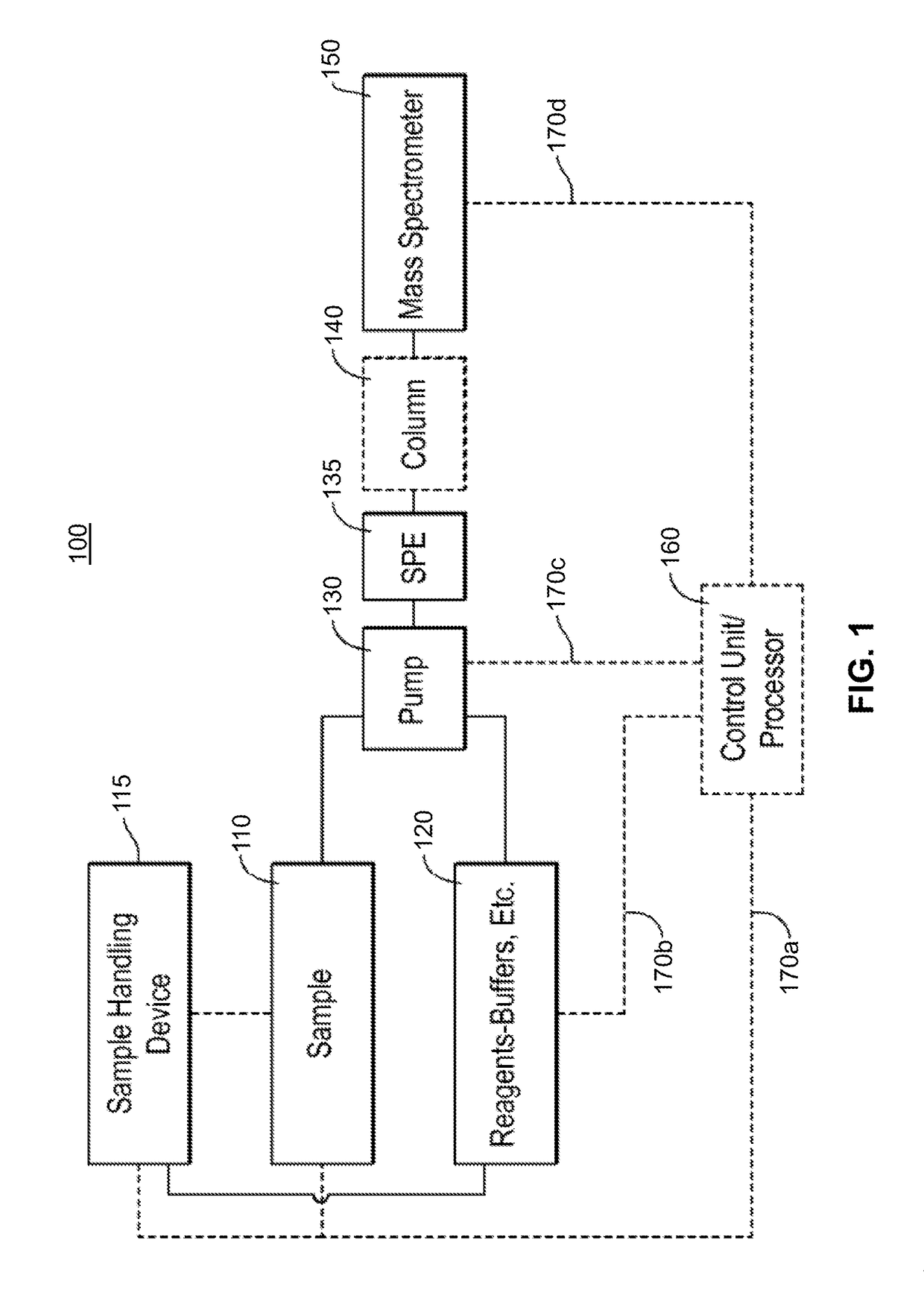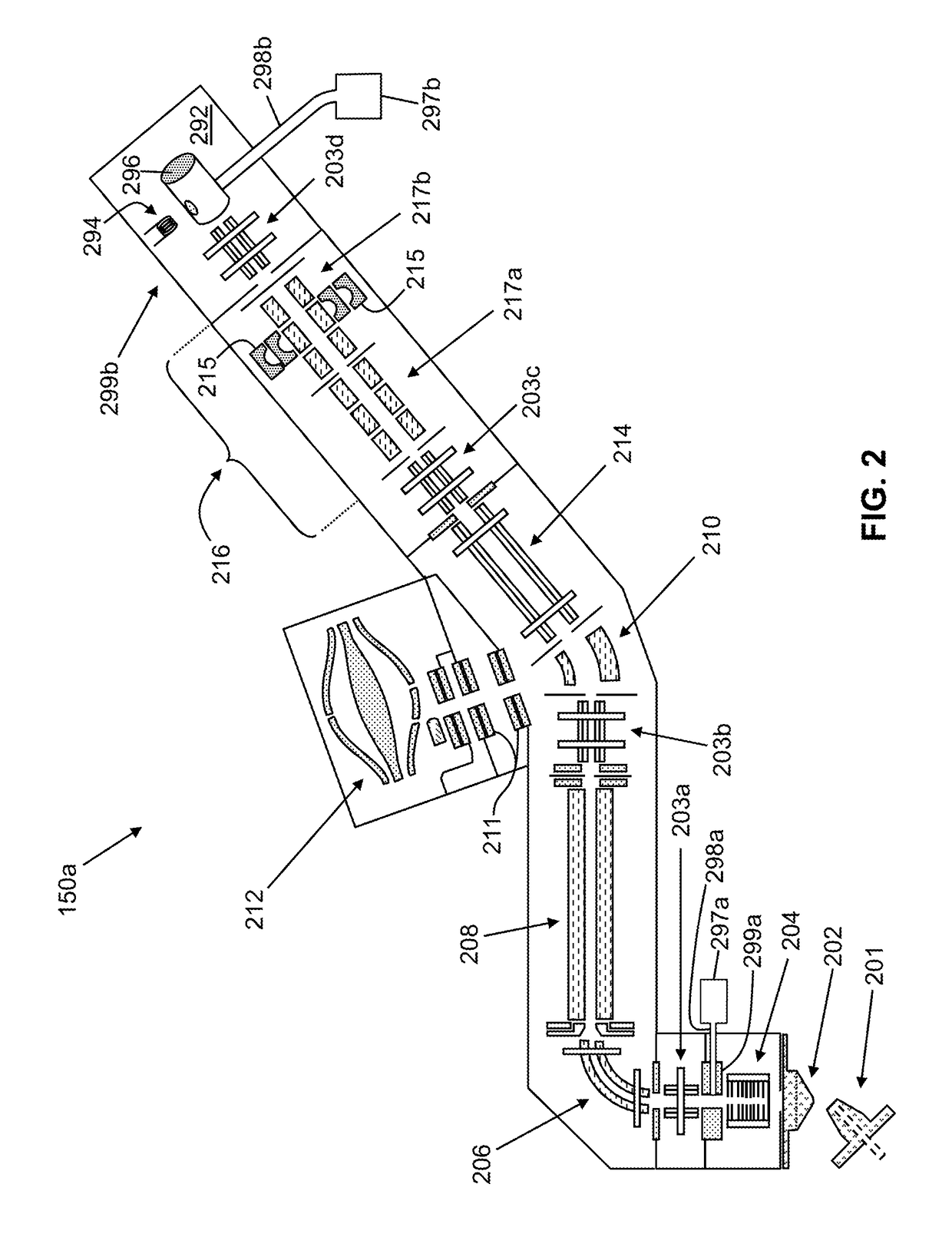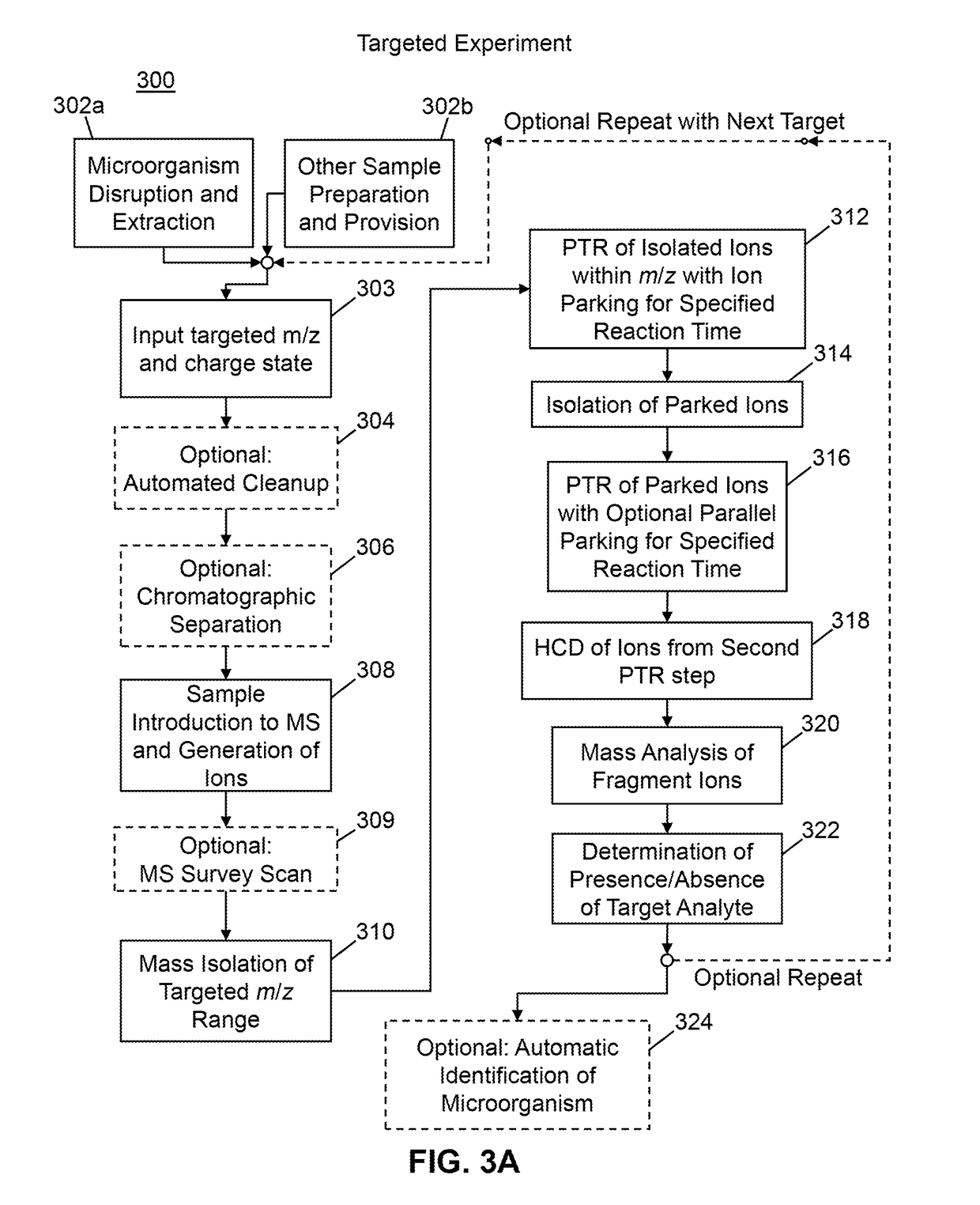Methods for Mass Spectrometric Based Characterization of Biological Molecules
a mass spectrometry and biological molecule technology, applied in the field of mass spectrometry, can solve the problems of many proteins that are difficult to isolate and purify, the amount of information that can be obtained when reducing intact proteins to their constituent peptides, and the top-down analysis, etc., to achieve enhanced spectral information and simplify spectral analysis
- Summary
- Abstract
- Description
- Claims
- Application Information
AI Technical Summary
Benefits of technology
Problems solved by technology
Method used
Image
Examples
example 1
tral Analysis of Ubiquitin Mixture
[0104]FIGS. 4A, 4B, 4C and 4D illustrate application of the combined techniques of PTR and HCD to analysis of a solution of ubiquitin containing abundant polymeric contaminants. FIG. 4A is a graphic depiction of a survey scan (MS1 scan) of the sample. Peaks which may be recognized as relating to the ubiquitin compound are labeled with their charge states and m / z positions. Most or all of the remaining peaks, a few select ones of which are labeled with their m / z positions, correspond to polymeric contaminants. In order to simplify the spectrum, a sub-population of ions within an isolation window of width 2 Th around the expected position of the ubiquitin +13-charge-state peak were isolated (mass spectrum of isolate shown inFIG. 4B) and the isolated original ions were exposed to PTR reagent, without ion parking, for 50 ms. A mass spectrum of the first-generation product ions produced by this PTR step is illustrated in FIG. 4C. After the PTR step, seve...
example 2
tral Analysis of Two-Protein Mixture
[0106]FIGS. 5A, 5B, 5C, 5D, 5E and 5F illustrate application of the combined techniques of PTR and HCD to analysis of a mixture of carbonic anhydrase and myoglobin. FIG. 5A is an MS1 survey spectrum of the mixture of carbonic anhydrase and myoglobin in solution. The tall peak at 616 Th is the signature of the heme moiety that is otherwise non-covalently attached to myoglobin. The sample preparation results in separation of the heme (holo-myoglobin becoming apo-myoglobin). The heme peak is commonly observed. In order to simplify the spectrum, a sub-population of ions within an isolation window of width 2 Th around the expected position of the myoglobin +21-charge-state peak were isolated (mass spectrum of isolate shown in FIG. 5B) and the isolated original ions were exposed to PTR reagent, without ion parking, for 30 ms. A mass spectrum of the first-generation product ions produced by this PTR step is illustrated in FIG. 5C. The general form of the...
example 3
tral Analysis of Myoglobin in Bacterial Lysate
[0109]FIGS. 6A, 6B, 6C, 6D, 6E, 6F and 6G illustrate application of the combined techniques of PTR and HCD to analysis of myoglobin within a bacterial lysate. The sample was prepared by adding a small amount of myoglobin into a lysate of the bacterium E. coli. FIG. 6A shows an MS1 survey scan of the sample. Peaks attributable to myoglobin (not labeled) in the mass spectrum of FIG. 6A are nearly invisible in the midst of many peaks attributable to bacterium-derived compounds. During mass spectral analysis of this sample, a sub-population of the original ions were isolated within an isolation window of width 2 Th centered at an m / z value of 808 Th, which is the expected position of the ion species comprising the multi-protonated myoglobin molecule of charge state +21. FIG. 6B shows a mass spectrum of the isolated ions.
[0110]FIG. 6C illustrates a test mass spectrum that was obtained after reacting a portion of the isolated ions depicted FIG...
PUM
| Property | Measurement | Unit |
|---|---|---|
| molecular weight | aaaaa | aaaaa |
| volumes | aaaaa | aaaaa |
| molecular weight | aaaaa | aaaaa |
Abstract
Description
Claims
Application Information
 Login to View More
Login to View More - R&D
- Intellectual Property
- Life Sciences
- Materials
- Tech Scout
- Unparalleled Data Quality
- Higher Quality Content
- 60% Fewer Hallucinations
Browse by: Latest US Patents, China's latest patents, Technical Efficacy Thesaurus, Application Domain, Technology Topic, Popular Technical Reports.
© 2025 PatSnap. All rights reserved.Legal|Privacy policy|Modern Slavery Act Transparency Statement|Sitemap|About US| Contact US: help@patsnap.com



